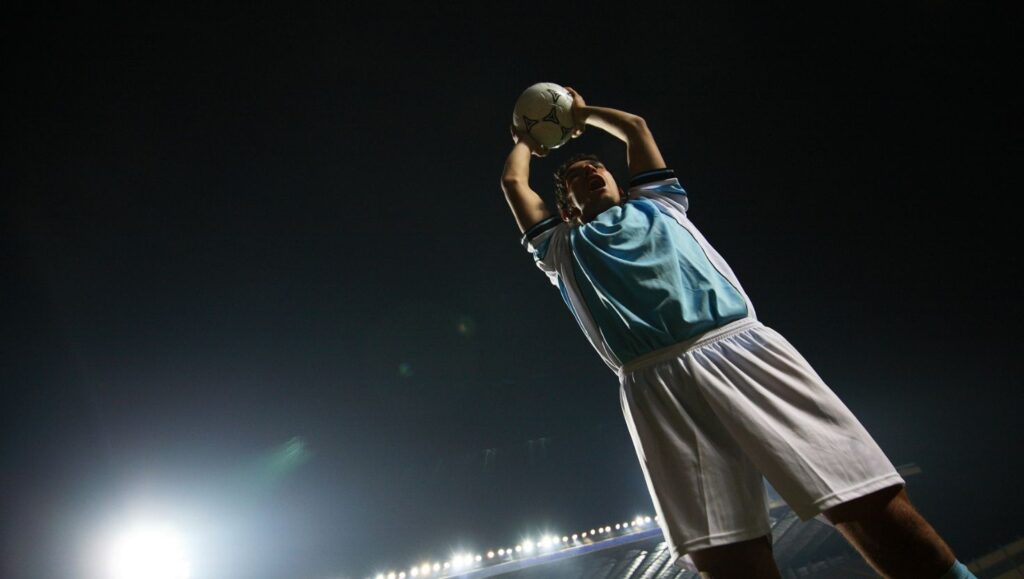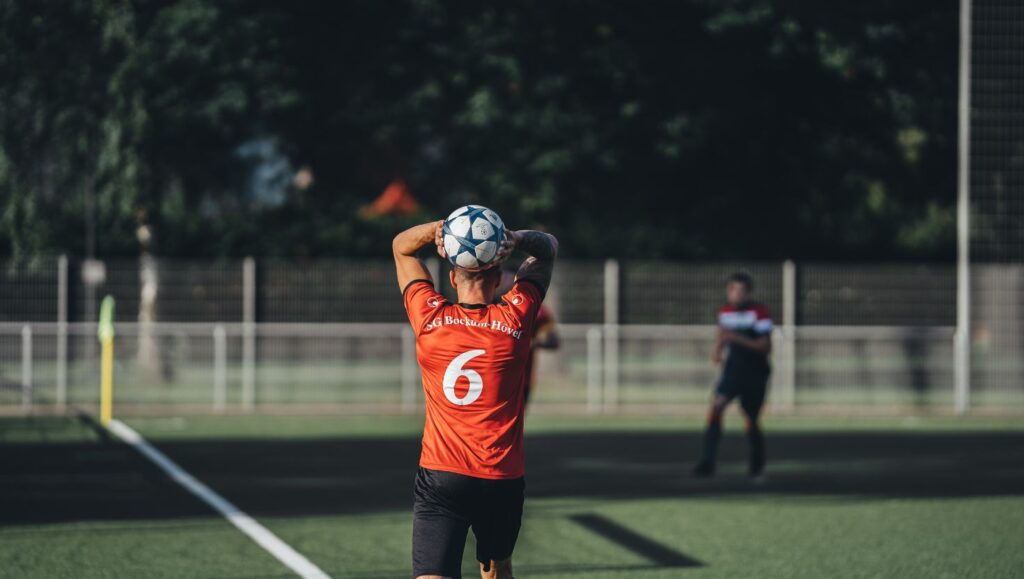Football is not just a game; it’s a global heartbeat pulsating through the veins of cultures, communities, and individuals alike. From the first touch on dusty streets in Buenos Aires to the roaring stadiums in Europe’s capitals, the sport transcends language and geography, weaving together stories of triumph, heartbreak, and shared passion. As the world spins on, drawing in new fans every minute, understanding the labyrinth of football culture unlocks a deeper appreciation for what many call the “beautiful game.” This sweeping phenomenon is a prism reflecting human identity, unity, and the quirks of our social fabric.
What makes football so irresistibly magnetic? It is the drama embedded in every pass, the sheer artistry of a perfectly timed dribble, and the communal joy that explodes when a last-minute goal secures victory. Alongside these moments, the sport embodies traditions, rivalries, and styles shaped by diverse histories and local flavors. From the samba dances on Brazilian pitches to the tactical battles that define English Premier League showdowns, football captures the complexities of culture and identity. It offers fans not just entertainment but a platform to belong, celebrate, and sometimes rebel.
2025 brings a landscape where football’s influence is both timeless and evolving. Major brands like Nike, Adidas, and Puma continue to fuel the sport’s fashion and identity, while rising digital platforms unite fans worldwide. Whether you are witnessing the fierce derbies reported in live updates or diving into tactical analysis to decode the game’s nuances, football is bridged by passion and enriched by its diversity. This guide peels back the layers, inviting newcomers into the fold and seasoned fans to rekindle their love through stories of unity, rivalry, and the cultural pulse that makes football more than sport — an unstoppable force connecting billions.

Understanding Football’s Global Impact: The Universality of the Beautiful Game
Football stands as the most popular sport worldwide, captivating roughly 4 billion fans from every corner of the planet. This universal appeal isn’t accidental; it’s crafted through the game’s elegant simplicity and profound resonance. A basic ball and a flat surface can spark an entire community’s passion, making football a truly accessible sport. Yet, its layers of skill, strategy, and emotion go far beyond the basics.
One of the game’s strongest unifying powers is its ability to act as a universal language. Imagine the streets of Mumbai and Cairo, where kids play barefoot with makeshift balls, sharing moves and tricks that are understood across continents. Football’s rules remain consistent, but the style of play reflects local culture — from the flair of Latin American dribblers to the disciplined pressing of European squads. This cultural exchange is evident in the global migration of players and coaches, enriching leagues with diverse tactics and styles.
Key reasons why football resonates globally:
- Accessibility: Minimal equipment needed, allowing people from all economic backgrounds to participate.
- Emotional Engagement: The drama of wins, losses, and comebacks (like those legendary moments on rktfootball.com) hooks fans instantly.
- Community and Identity: Local clubs foster neighborhood pride while international tournaments unite nations.
- Media Reach: Worldwide broadcasts and streaming ensure football moments feel immediate everywhere.
The Worldwide Spread of Football Leagues and Events
Leagues like the English Premier League, Spain’s La Liga, Germany’s Bundesliga, and emerging competitions such as Major League Soccer (MLS) and the Copa Libertadores embody football’s global footprint. These leagues pull in stars from around the world — a blend of household names like those celebrated in footballers’ fashion and media profiles and rising talents discovered through modern scouting networks.
Grand tournaments, notably the FIFA World Cup and the UEFA Champions League, elevate football to a global spectacle where national pride and individual brilliance collide. The World Cup especially is a fertile ground for cultural celebration and national narrative building, drawing unparalleled attention and uniting even rival fans in shared experience.
| Major Football Leagues/Tournaments | Global Reach | Notable Features |
|---|---|---|
| English Premier League (EPL) | Worldwide Broadcast & Fanbase | Fast-paced, physical, with international superstars |
| Copa Libertadores | Strong South American Following | Passionate, intense, tactical |
| UEFA Champions League | Highest Club Competition | Elite clubs, tactical masterclasses |
| MLS (USA) | Rapid Growth, Expanding Fanbase | Mix of international stars and local talent |
| FIFA World Cup | Global Unifier Every 4 Years | National teams, pride, and drama |
Cultural Identity and Football: More Than Just a Game
Football is deeply intertwined with cultural identity in many countries. It often becomes a shared language through which communities express values, history, and social realities. Brazilian football, for example, is infused with samba rhythms, flair, and joyous spontaneity. The game’s style mirrors the country’s vibrant culture and passionate spirit, evident both on and off the pitch.
In other regions, football plays a significant role in national pride and political symbolism. The explosives of El Clásico — the rivalry between Barcelona and Real Madrid — aren’t just about points but reflect complex cultural and political histories involving Catalan identity versus the Spanish state. Such rivalries stir heated emotions among fans and provide narratives that enrich the sport beyond scores and statistics.
Ways football shapes cultural identity:
- Representation: Players often symbolize broader cultural narratives such as immigration or social change.
- Traditions: Chants, dress codes (explained in football jerseys cultural meanings), and rituals connect fans across generations.
- Political Expression: Matches or fans’ actions sometimes serve as peaceful resistance or boost national unity.
- Language of Emotion: The pure expression of passion, heartbreak, or triumph captures fans on a visceral level.
Football’s Role in Social Cohesion and Community Building
Beyond the spectacle and emotion, football also fosters social bonding. Local clubs act as central hubs for communities, offering youth programs, social initiatives, and spaces for cultural interaction. These grassroots initiatives often provide opportunities to underprivileged groups — helping shape better futures while keeping the passion for the game alive.
Organizations like “Football for Peace” exemplify football’s transformative potential, using the sport as a tool to bridge divides in conflict regions by promoting dialogue and intercultural understanding. The unique power of football to break down societal barriers and foster solidarity can be seen not just in small communities but also on the global stage.
| Social Impact of Football Initiatives | Purpose | Examples |
|---|---|---|
| Youth Engagement | Provide access and training | Brazilian youth academies cultivating magic feet (rktfootball.com) |
| Peacebuilding | Promote dialogue and reconciliation | Football for Peace initiative |
| Community Identity | Build pride and belonging | Local club fan culture and rituals |
| Breaking Barriers | Foster inclusion and diversity | Grassroots programs worldwide |
The Tactical Intrigue: How Understanding the Game Deepens the Fan Experience
To truly appreciate football’s beauty, fans must dive beneath the surface of goals and dribbles to the chess-like tactics on display. Formations such as 4-3-3 or 3-5-2 shape the flow of play and reveal coaches’ philosophies. In the modern game, tactical awareness has become vital to following — understanding it enhances every moment, from watching a counterattack to analyzing a defender’s positioning.
Players fill specialized roles, and their movements relate to teammates and opponents in a dynamic dance of space and timing. Roles like the modern sweeper-keeper or the pressing winger add complexity to what once seemed a straightforward contest of ball control.
How tactics enrich fan experience:
- Engagement: Recognizing strategies turns casual watching into a thrilling mental game.
- Appreciation: Fans value not just flair but the discipline and teamwork behind it.
- Context: Tactical knowledge clarifies why teams win, lose, or draw.
- Discussion: Enables participation in fan debates and analysis forums (see rktfootball.com tactical analysis).
| Common Football Formations | Main Characteristics | Typical Use Cases |
|---|---|---|
| 4-3-3 | Balanced attack and defense, wide wingers | High pressing and possession-based teams |
| 3-5-2 | Midfield dominance, wing-backs providing width | Teams focusing on control and quick counters |
| 4-4-2 | Two forwards, simple structure | Classic setup for balanced play |
| 5-3-2 | Defensive solidity, three center-backs | Teams protecting a lead or prioritizing defense |
Fan Culture and the Stadium Experience: More Than Watching the Game
The energy in stadiums worldwide is unlike anywhere else — a living, breathing celebration of the beautiful game. The chants, drumbeats, coordinated displays, and iconography all contribute to a vibrant atmosphere that turns football matches into shared, unforgettable experiences. Fans form tight-knit communities often centered around beloved clubs, creating rituals and expressions that deepen their bond with the sport.
Merchandise brands like Nike, Adidas, and Kappa play a critical role in shaping fan identities through kits and gear, while brands like Umbro and Hummel evoke nostalgia and tradition. The evolution in fan gear is not just fashion; it’s a statement of allegiance and cultural expression.
Elements that define stadium and fan culture:
- Chants and Songs: Iconic football chants build atmosphere and intimidate opponents (more on chants).
- Visual Displays: Tifo arrangements showcasing art and passion.
- Fan Rituals: Pre-game marches, local derby traditions (regional derby culture).
- Merch and Fashion: Apparel featuring major brands like Reebok and New Balance offering unique club kits.
| Top Brands Influencing Football Fashion | Known For | Fan & Player Appeal |
|---|---|---|
| Nike | Innovative designs and star endorsements | Popular with elite players and fans |
| Adidas | Classic styles with modern tech | Global football reach |
| Puma | Bold designs and emerging talent support | Known for flair and speed |
| Under Armour | Performance gear, growing football presence | Appealing to athletic players and fans |
| Reebok | Retro vibes and heritage kits | Nostalgic fanbases |
| New Balance | Comfort and incremental style | Growth in football apparel |
| Umbro | Soccer roots and classic kits | Traditional fans |
| Kappa | Bold logos and street fashion fusion | Urban fan communities |
| Lotto | Reliable football basics | Growing market presence |
| Hummel | Known for distinctive chevrons and style | European club partnerships |

The Rising Stars and Underdogs: Stories Behind Football’s Human Side
The beauty of football doesn’t only dwell in historic clubs or famous superstars. The game’s soul pulses strongest in the stories of underdogs and budding talents emerging from unexpected places. Football’s global nature ensures a continuous influx of fresh talent, whose journeys reflect resilience, passion, and hope.
Clubs operating with tight budgets can still break through, proving that heart and smart strategy beat deep pockets sometimes (rktfootball.com coverage). Meanwhile, rising stars from urban football academies and street football scenes bring flair and innovation, redefining how the game is played and enjoyed globally.
- Youth academies: Programs scouting and nurturing future legends, like African football’s promising talents (rktfootball.com insight).
- Community heroes: Captains and defenders who inspire at local levels and beyond.
- Comeback stories: Players battling injury or adversity to return stronger (football injury crises).
- Street football influence: How raw talent from informal games shapes professional styles (rktfootball.com street football stars).
| Types of Football Heroes | Examples | Impact on Culture |
|---|---|---|
| Global Superstars | Messi, Mbappé, Haaland | Inspire millions, influence fashion and media |
| Emerging Talents | Young players from academies worldwide | Bring innovation and hope |
| Underdog Clubs | Teams overcoming odds | Fuel emotional stories and fan loyalty |
| Community Leaders | Local captains and defenders | Represent cultural identity and persistence |


